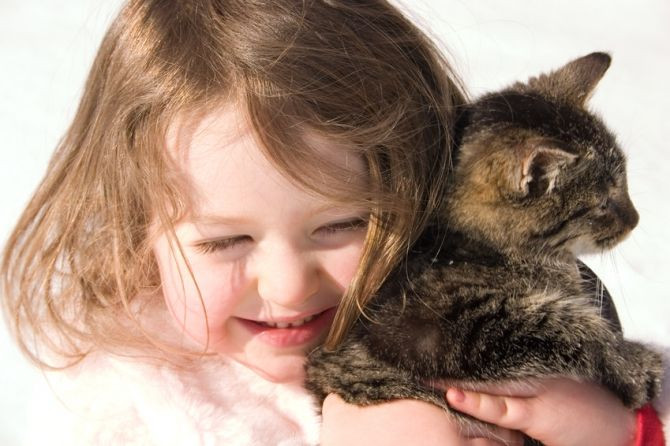Pets May Help Children With Autism Develop Prosocial Behavior

Just last month, experts revealed introducing infants to pets can help reduce their chance of respiratory illness symptoms, new research now shows that pets can also have a positive effect on autistic children's behavior.
Autism is a developmental disorder that appears in the child's first three years of life. Autism affects the brain's development of social and communication skills. Both children and adults living with autism experience difficulty interacting with others as well as nonverbal communication. It is difficult for one with autism to distinguish, comprehend and express feelings and intentions.
Conducted by lead study author Marine Grandgeorge of the Hospital Research Center of Brest in France, the study assessed two categories, "offering to share" and "offering comfort." Grandgeorge believes both categories represent the prosocial behaviors, proposing that individuals living with autism may be able to develop such behaviors through appropriate experiences.
Researchers observed children in three different living arrangements: never owned a pet, owned a pet since birth, or received a pet after the age of five. Parents were asked to participate in questionnaires that discussed the presence of pets in the household. The information from the questionnaires were collected between 2006 and 2007.
Experts found the most critical time of an autistic child is between the ages of four and five because it represents the period where autism is at its severity. Though some children may outgrow some of the major deficiencies, the ages of four and five are the vital ages to evaluate a child's behavior.
Results demonstrated children, who received a pet, displayed increased levels of interaction between family members. Children are more likely to spend more time with their family and more time sharing the attention of the pet. Those children also scored higher when it came to "offering to share" and "offering comfort."
Of those who have had a pet from birth overall demonstrated weaker relationships. These children neither interacted nor bonded with the pet.
The study was published in the PLOS ONE.
Published by Medicaldaily.com



























